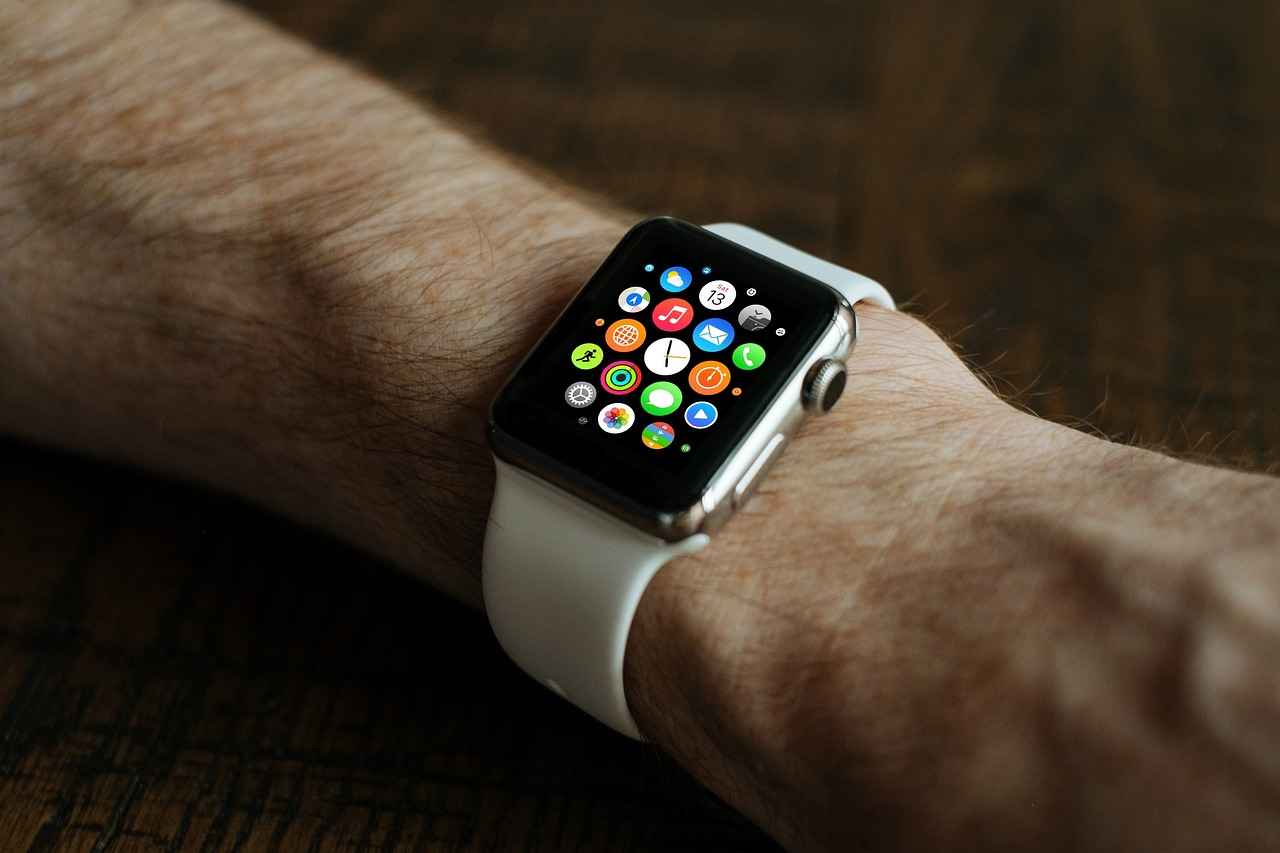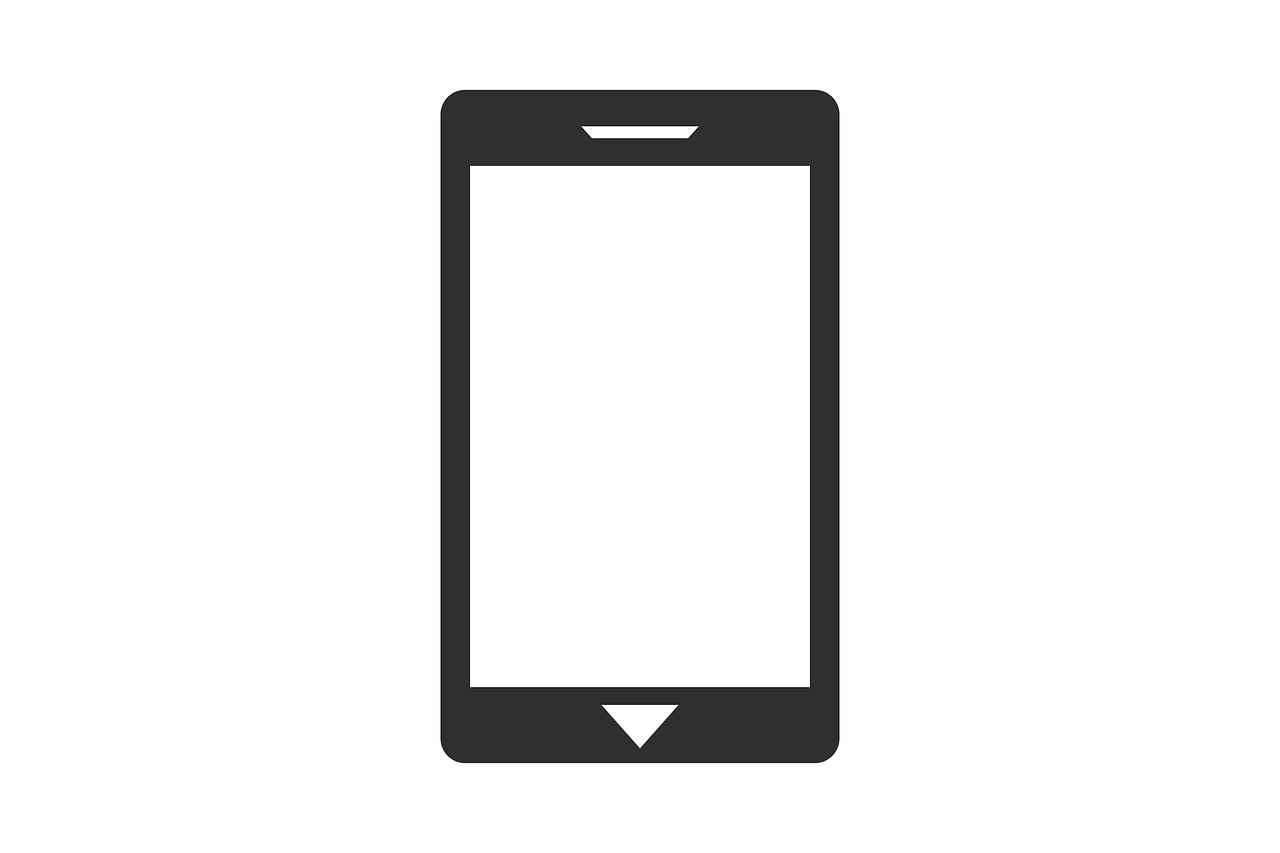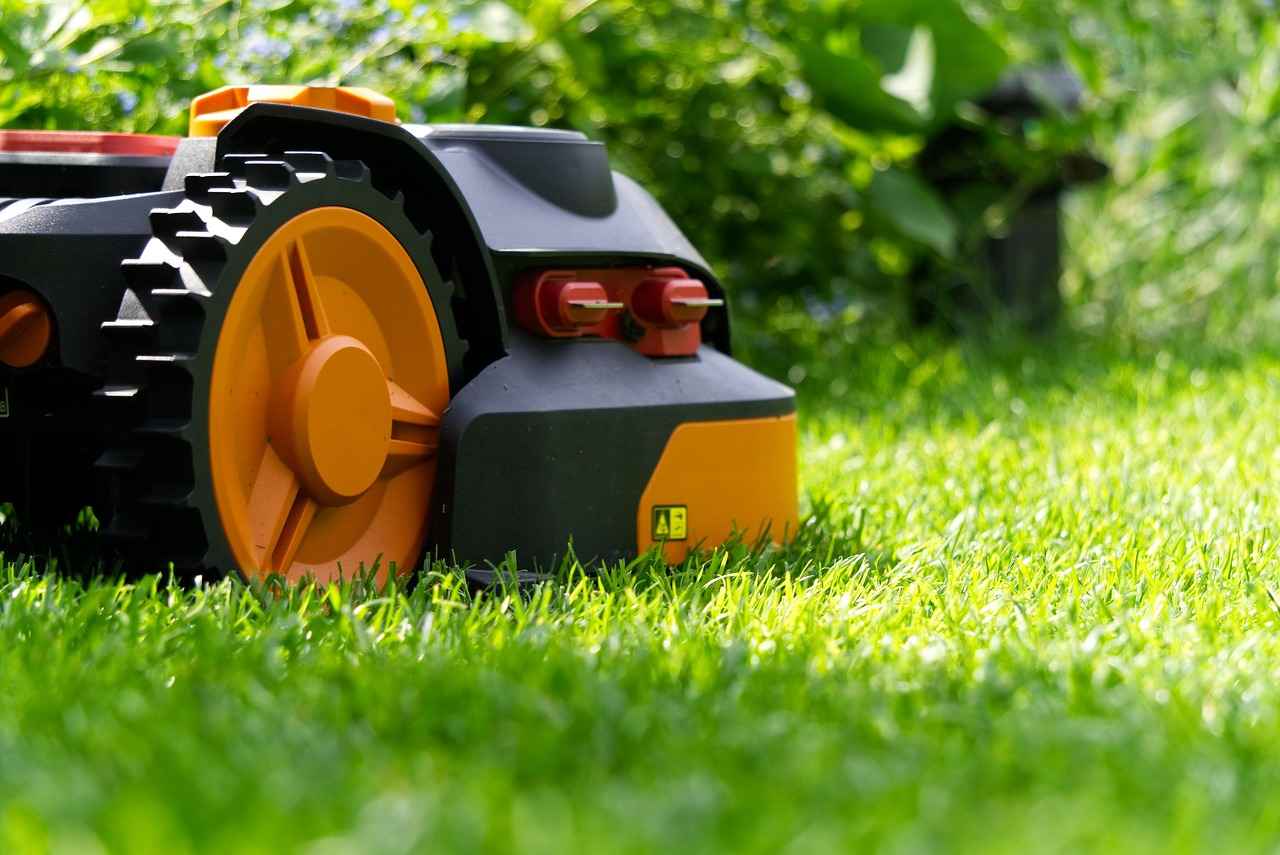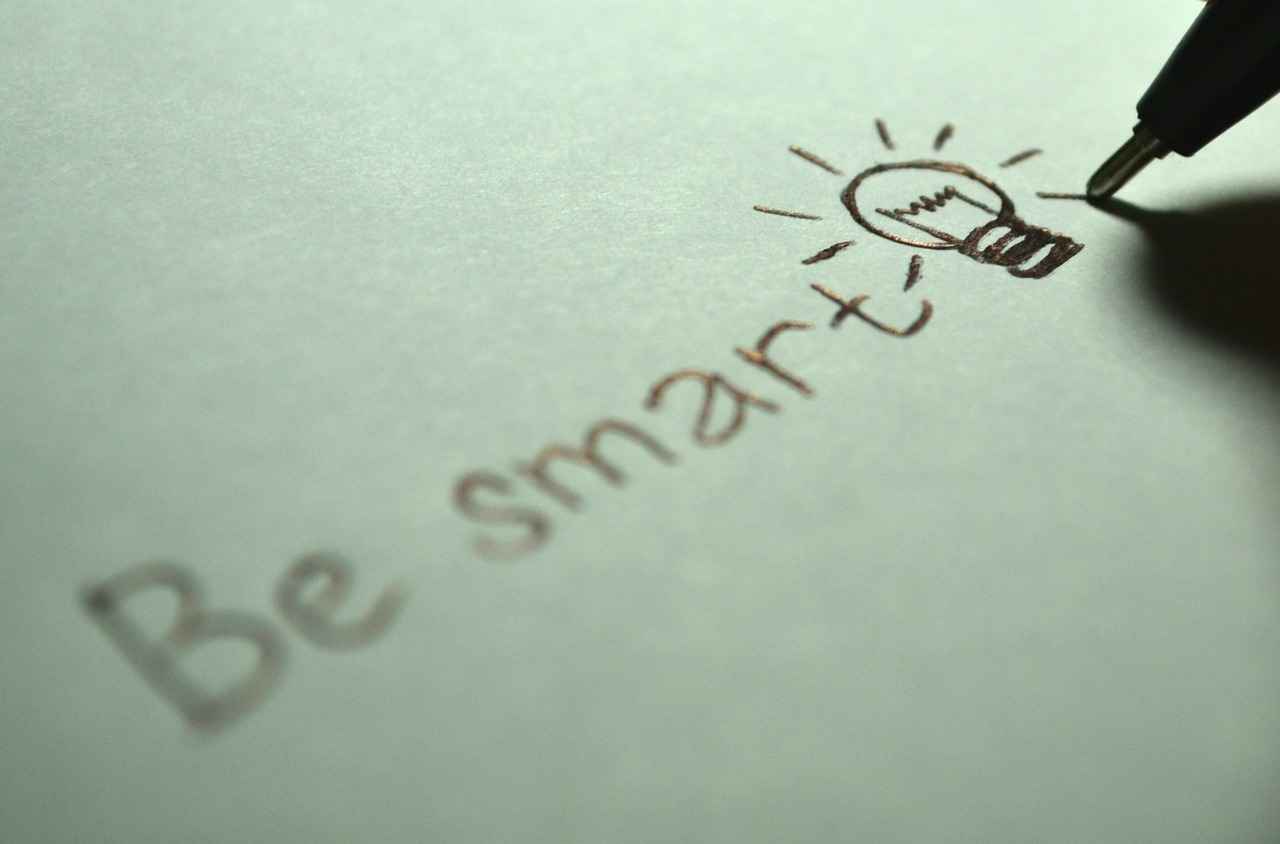This article delves into essential smart home devices that significantly enhance both safety and comfort within your living space. By integrating advanced technology into everyday life, these devices not only provide convenience but also peace of mind. Below, we explore various smart home devices, highlighting their features, benefits, and the ways they can seamlessly fit into your daily routine.
- Smart Security Cameras: These devices offer real-time surveillance and alerts, ensuring your home is continuously monitored. With features like remote viewing and motion detection, they enhance your security effortlessly.
- Smart Door Locks: Experience the convenience of keyless entry with smart locks. They allow for remote locking and can be programmed for guest access, making it easy to manage entry points.
- Smart Thermostats: Optimize your home’s heating and cooling with smart thermostats that learn your preferences. They can be controlled remotely, ensuring energy efficiency and comfort.
- Smart Lighting Systems: Automate your lighting with smart systems that allow for customization and scheduling, enhancing ambiance while saving energy.
- Smart Smoke and Carbon Monoxide Detectors: These detectors provide immediate alerts to your smartphone, ensuring safety by notifying you of potential dangers even when you are away.
- Smart Plugs and Outlets: Control devices remotely with smart plugs, allowing for energy management and automation of daily routines.
- Smart Home Hubs: Serve as the central control point for all smart devices, ensuring seamless communication and integration across various technologies.
- Smart Speakers: Not only do they play music, but they also act as virtual assistants, controlling other smart devices through voice commands.
- Smart Appliances: From refrigerators to ovens, smart appliances enhance functionality and convenience, making everyday tasks easier.
- Smart Blinds and Curtains: Automate light control and improve energy efficiency with these innovative window treatments.
- Smart Irrigation Systems: Optimize watering schedules for gardens and lawns, promoting sustainability while conserving water.
- Smart Home Energy Management Systems: Gain insights into energy consumption, helping you make informed decisions to reduce costs and improve efficiency.
In conclusion, integrating smart home devices into your living space can significantly enhance your lifestyle. Not only do they provide increased safety and comfort, but they also promote energy efficiency and convenience. As technology continues to evolve, the potential for smart homes to improve our daily lives will only grow.

1. Smart Security Cameras
Smart Security Cameras have revolutionized home surveillance, providing homeowners with a robust solution for monitoring their properties. These advanced devices not only offer real-time surveillance but also send immediate alerts to your smartphone, ensuring that you are always aware of what is happening around your home.
One of the key features of smart security cameras is their ability to provide remote viewing. Homeowners can access live feeds from their cameras through dedicated apps on their smartphones or tablets, allowing them to check in on their homes from anywhere in the world. This feature is particularly useful for those who travel frequently or spend long hours away from home.
Additionally, smart security cameras often come equipped with motion detection technology. This means that the cameras can differentiate between regular activity and potential threats. When suspicious movement is detected, the camera can send instant notifications, allowing homeowners to respond quickly. Many models also include features such as night vision and two-way audio, further enhancing their functionality and effectiveness.
Moreover, these cameras can be integrated with other smart home devices, creating a comprehensive security system. For example, when a camera detects motion, it can trigger smart lights to turn on, illuminating the area and potentially deterring intruders. This integration fosters a seamless and proactive approach to home security.
In conclusion, investing in smart security cameras is a vital step towards ensuring the safety and security of your home. With their ability to provide real-time monitoring, instant alerts, and integration with other smart devices, they offer peace of mind for homeowners. By choosing the right model that fits your needs, you can enhance your home’s security and enjoy a greater sense of safety.

2. Smart Door Locks
Smart Door Locks represent a significant advancement in home security technology, providing homeowners with a blend of convenience and peace of mind. These innovative devices eliminate the need for traditional keys, allowing for keyless entry through various methods such as smartphone apps, key codes, or even biometrics. This feature not only enhances security but also simplifies access for family members and guests.
One of the standout features of smart door locks is their remote locking and unlocking capabilities. Homeowners can manage their doors from anywhere, ensuring that they can secure their homes even when away. This is especially beneficial for those who travel frequently or have busy lifestyles, as it removes the worry of whether they remembered to lock the door.
- Guest Access Management: Smart door locks allow users to grant temporary access to visitors or service personnel. This can be done through unique codes or digital keys, which can be easily created and deleted as needed.
- Activity Monitoring: Many smart locks come equipped with features that allow homeowners to monitor who enters and exits their home. This can be invaluable for tracking the comings and goings of family members or service providers.
Installation of smart door locks is generally straightforward, with many models designed to fit existing deadbolts. This compatibility makes it easy for homeowners to upgrade their security without extensive renovations. Additionally, these devices often integrate seamlessly with other smart home systems, allowing for comprehensive home automation.
In conclusion, smart door locks are an essential component of modern home security, offering a range of features that enhance both convenience and safety. By investing in this technology, homeowners can enjoy a more secure living environment while simplifying their daily routines.
2.1. Benefits of Smart Door Locks
Smart door locks have revolutionized home security, merging convenience with advanced technology. These innovative devices not only enhance safety but also provide homeowners with unparalleled control over their entry points. Below, we explore the various benefits of smart door locks in detail.
- Enhanced Security: Smart door locks utilize advanced encryption and authentication methods, making them significantly more secure than traditional locks. Many models offer features such as auto-locking and tamper alerts, ensuring that your home remains protected at all times.
- Convenient Keyless Entry: With smart door locks, physical keys become a thing of the past. Homeowners can unlock their doors using smartphone apps, codes, or even biometric data such as fingerprints. This feature eliminates the hassle of carrying keys and the risk of losing them.
- Remote Access Control: One of the standout features of smart door locks is the ability to control access remotely. Whether you are at work or on vacation, you can lock or unlock your door from anywhere, providing peace of mind and convenience.
- Guest Access Management: Smart door locks allow homeowners to grant temporary access to guests, service personnel, or delivery drivers without being physically present. You can create unique codes for each guest, which can be easily revoked once their visit is over.
- Integration with Smart Home Systems: Many smart door locks seamlessly integrate with other smart home devices, such as security cameras and alarms. This creates a comprehensive security system that can be monitored and controlled from a single app.
- Activity Monitoring: Smart door locks often come equipped with features that allow you to monitor who enters and exits your home. You can receive notifications and check logs to ensure that your home is secure.
In conclusion, the benefits of smart door locks extend far beyond mere convenience. They provide a robust security solution that adapts to the modern homeowner’s lifestyle, making them an essential component of any smart home setup.
2.1.1. Keyless Entry Features
Keyless Entry Features have revolutionized the way homeowners interact with their front doors, providing a blend of convenience and security that traditional locks simply cannot offer. With the rise of smart home technology, these features have become increasingly popular, allowing users to unlock their doors using smartphones, key fobs, or personalized codes.
One of the most significant advantages of keyless entry systems is the elimination of physical keys. This means no more fumbling through bags or pockets to find the right key, especially when your hands are full. Instead, you can simply use your smartphone or enter a code on a keypad, making it easier to enter your home.
- Enhanced Security: Keyless entry systems often come with advanced security features such as encryption and temporary access codes for guests or service personnel. This ensures that only authorized individuals can access your home.
- Remote Access: Many keyless entry systems can be integrated with smart home apps, allowing homeowners to lock or unlock their doors from anywhere. This feature is particularly useful for those who may forget to lock their doors or want to grant access to someone while away.
- Activity Monitoring: Some systems provide real-time notifications and logs of who enters and exits your home, giving you peace of mind and keeping you informed.
Moreover, the installation of keyless entry systems is generally straightforward. Many models are designed to fit existing door hardware, making it easy for homeowners to upgrade without extensive renovations. This compatibility ensures that anyone can enhance their home’s security with minimal hassle.
In conclusion, keyless entry features not only streamline the process of entering your home but also significantly enhance your security measures. As technology continues to evolve, these systems will likely become even more sophisticated, providing homeowners with greater control and peace of mind.
2.1.2. Guest Access Management
Guest Access Management is a significant feature of smart door locks that enhances both convenience and security for homeowners. One of the most valuable aspects of these locks is the ability to grant temporary access to visitors or service personnel without the need for physical presence. This capability is particularly useful for those who lead busy lives or frequently travel.
With smart door locks, homeowners can easily manage who enters their home and when. For instance, you can provide a unique access code for a housekeeper or a delivery person, which can be set to expire after a certain time. This ensures that your home remains secure while allowing necessary access. Such features are not only practical but also provide peace of mind, knowing that you can control entry points even when you are away.
Moreover, many smart locks come equipped with mobile applications that allow users to monitor entry and exit activity in real-time. This means you can receive notifications whenever someone uses the access code, ensuring that you are always informed about who is in your home. Additionally, some models offer the option to lock or unlock the door remotely, adding an extra layer of convenience.
In summary, the guest access management feature of smart door locks significantly enhances the practicality of home security systems. By allowing homeowners to grant temporary access without being physically present, these locks provide flexibility and control, making them an essential component of modern smart home technology.
2.2. Installation and Compatibility
Installing smart door locks is generally a straightforward process that most homeowners can manage without professional assistance. Many models are designed to be compatible with existing deadbolts, which simplifies the upgrade process significantly. This compatibility means that homeowners do not need to replace their entire locking mechanism, allowing for a seamless transition to smart technology.
- Easy Installation: Most smart door locks come with clear instructions and all the necessary hardware for installation. Many models can be installed in under an hour, making it a quick weekend project.
- Compatibility with Existing Locks: Before purchasing a smart lock, it’s essential to check its compatibility with your current deadbolt. Most reputable brands offer models that fit standard door sizes and existing deadbolts, ensuring a hassle-free upgrade.
- Wi-Fi and Bluetooth Connectivity: Many smart locks connect to your home Wi-Fi or Bluetooth, allowing for remote access and control. This feature enables homeowners to lock or unlock their doors from anywhere using a smartphone app.
- Smart Home Integration: These locks often integrate seamlessly with other smart home devices, such as security cameras and home automation systems. This integration allows for enhanced security features, including alerts and remote monitoring.
When selecting a smart door lock, consider factors such as battery life, security features, and the ability to grant temporary access to guests. Overall, the installation of smart door locks not only enhances home security but also adds a layer of convenience that traditional locks cannot offer.
In conclusion, upgrading to a smart door lock is an excellent investment for any homeowner looking to enhance their home’s security and convenience. With easy installation and compatibility with existing systems, transitioning to smart technology has never been easier.

3. Smart Thermostats
Smart Thermostats are revolutionizing the way we manage our home environments, providing a blend of comfort and energy efficiency that traditional thermostats simply cannot match. These innovative devices are designed to learn your heating and cooling preferences over time, allowing them to optimize energy usage based on your habits.
One of the standout features of smart thermostats is their ability to adapt to your lifestyle. For instance, if you typically lower the temperature at night and raise it in the morning, a smart thermostat will recognize this pattern and adjust accordingly, ensuring that your home is always at the perfect temperature when you need it. This not only enhances your comfort but also leads to significant energy savings.
With the integration of smartphone technology, smart thermostats can be controlled remotely. This means that whether you’re at work, on vacation, or simply out running errands, you can adjust your home’s temperature with just a few taps on your phone. This level of convenience allows you to ensure that your home is warm and welcoming when you return, without wasting energy while you’re away.
Smart thermostats also come equipped with various energy efficiency features. Many models provide detailed reports on your energy consumption, allowing you to identify trends and make informed decisions about your usage. Some devices even offer suggestions for optimizing your heating and cooling schedules based on your historical data.
Moreover, these thermostats can seamlessly integrate with other smart home devices, such as smart speakers and lighting systems. This allows for a cohesive smart home experience, where your thermostat can work in conjunction with other devices to create an optimized living environment.
In conclusion, smart thermostats are an essential addition to any modern home. They not only enhance comfort and convenience but also promote energy efficiency, making them a wise investment for homeowners looking to improve their living spaces while being environmentally conscious.
3.1. Energy Efficiency Features
Energy Efficiency Features of Smart Thermostats
In today’s world, where energy conservation is paramount, smart thermostats have emerged as essential devices for modern homes. These innovative tools not only provide convenience but also play a significant role in optimizing energy usage. By understanding their energy efficiency features, homeowners can make informed decisions that lead to substantial savings on utility bills.
- Adaptive Learning: Smart thermostats are equipped with adaptive learning technology that observes your heating and cooling preferences over time. This feature allows them to automatically adjust settings based on your habits, ensuring that energy is not wasted.
- Remote Temperature Control: With the ability to control your thermostat via smartphone apps, you can adjust your home’s temperature from anywhere. This means you can turn down the heat or air conditioning when you’re not home, further reducing energy consumption.
- Geofencing Technology: Many smart thermostats utilize geofencing, which detects when you leave or approach your home. This feature enables the thermostat to adjust the temperature accordingly, ensuring that energy is conserved while you’re away.
- Energy Reports: Smart thermostats often provide detailed energy reports that show your usage patterns. This information helps homeowners identify peak usage times and adjust their habits to save more energy.
- Integration with Other Smart Devices: These thermostats can integrate with other smart home devices, such as smart blinds and lighting systems, to create a comprehensive energy management system that maximizes efficiency.
In conclusion, smart thermostats are invaluable for homeowners looking to enhance their energy efficiency. By leveraging advanced features such as adaptive learning, remote control, and integration with other smart devices, these thermostats not only help in reducing energy bills but also contribute to a more sustainable lifestyle.
3.2. Remote Control Options
In today’s fast-paced world, the integration of technology into our homes has transformed the way we manage our living spaces. One of the standout features of modern smart homes is the remote control options offered by devices like smart thermostats. These options not only enhance convenience but also ensure that homeowners can maintain a comfortable environment with minimal effort.
With the ability to control your home’s temperature from anywhere, smart thermostats provide an unparalleled level of flexibility. Homeowners can use their smartphones to adjust the heating or cooling settings, ensuring that their home is at the perfect temperature upon arrival. This feature is especially beneficial for those who have unpredictable schedules or are frequently away from home.
- Convenience: Imagine coming home after a long day to a perfectly warmed or cooled house, all thanks to a quick adjustment made from your smartphone while you’re on your way.
- Energy Savings: By utilizing remote control options, homeowners can optimize their energy usage, turning down the heat or air conditioning when they are not at home, which can lead to significant savings on energy bills.
- Smart Scheduling: Many smart thermostats allow users to set schedules for temperature changes, ensuring that your home is comfortable when you need it to be, without wasting energy when you are away.
Moreover, the integration of smart thermostats with other smart home devices adds another layer of convenience. For instance, when combined with smart lighting systems, you can create an automated routine that adjusts the temperature and lighting based on your preferences and daily activities.
In conclusion, the remote control options provided by smart thermostats are not just about convenience; they represent a significant step towards creating a more efficient and comfortable living environment. By embracing this technology, homeowners can enjoy a home that adapts to their lifestyle, ultimately enhancing their quality of life.

4. Smart Lighting Systems
Smart Lighting Systems are revolutionizing the way we illuminate our homes, offering a blend of convenience, energy efficiency, and customizable ambiance. These systems enable homeowners to control their lighting with ease, creating the perfect atmosphere for any occasion.
One of the key features of smart lighting systems is their ability to be customized. Users can create specific lighting scenes that cater to different activities, such as reading, entertaining, or relaxing. For instance, a dimmed, warm light can set a cozy mood for movie nights, while bright, cool light can enhance focus during work hours. Additionally, these systems can be automated to adjust based on time of day or occupancy, ensuring that lights are on when needed and off when not.
Smart lighting systems significantly contribute to energy savings. By allowing users to control lights remotely via smartphone apps, homeowners can ensure that lights are turned off when they leave a room or even the house. Furthermore, many systems offer features like motion sensors and timers, which automatically turn lights on or off based on movement or pre-set schedules. This not only reduces electricity bills but also minimizes the environmental impact.
Another advantage of smart lighting systems is their ability to integrate seamlessly with other smart home devices. For example, lights can be programmed to turn on when a smart door lock is disengaged, or to flash in response to a security alert. This interconnectedness enhances the overall functionality and security of a smart home, providing peace of mind to homeowners.
Most smart lighting systems come with user-friendly interfaces, making them accessible even for those who are not tech-savvy. Many systems can be controlled through voice commands when paired with smart speakers, allowing for hands-free operation. This level of convenience is especially beneficial for individuals with mobility challenges or those who simply prefer a more effortless way to manage their home environment.
In conclusion, smart lighting systems represent a significant advancement in home automation technology. By combining customization, energy efficiency, and integration capabilities, they not only enhance the living experience but also contribute to a more sustainable future. As technology continues to evolve, these systems will likely become even more sophisticated, offering homeowners more ways to create their ideal living spaces.
4.1. Customization and Automation
Customization and Automation in smart lighting systems are revolutionary features that transform the way we experience our living spaces. By utilizing advanced technology, homeowners can create unique lighting scenes that perfectly align with their activities and moods.
Imagine hosting a dinner party where the lights are dimmed to a warm glow, setting an intimate atmosphere. Or picture a cozy movie night with soft lighting that enhances the cinematic experience. These scenarios are made possible through the customization capabilities of smart lighting systems.
One of the most significant advantages of smart lighting is the ability to automate schedules. Homeowners can program their lights to turn on and off at specific times, ensuring that their home is well-lit when they arrive and saving energy when they are away. This feature not only enhances convenience but also contributes to energy efficiency.
- Flexible Lighting Scenes: Users can create different lighting scenes for various occasions, such as reading, entertaining, or relaxing.
- Remote Control: With smartphone apps, users can adjust their lighting from anywhere, providing the ultimate flexibility.
- Voice Activation: Many smart lighting systems are compatible with voice assistants, allowing users to control their lights hands-free.
Moreover, smart lighting systems can integrate with other smart home devices, creating a cohesive environment. For instance, lights can automatically dim when a movie starts, or brighten when a door opens, enhancing the overall user experience.
In conclusion, the ability to customize lighting scenes and automate schedules significantly enhances the ambiance of any space. Whether you are preparing for a gathering or enjoying a quiet evening at home, smart lighting systems offer unparalleled flexibility and efficiency, making them an essential component of modern living.
4.2. Energy Savings with Smart Lighting
Energy Savings with Smart Lighting
Smart lighting systems are revolutionizing the way we manage our home lighting, offering not only convenience but also significant energy savings. These advanced systems enable users to control their lighting remotely, ensuring that lights are only on when needed. This capability is particularly beneficial in reducing unnecessary energy consumption.
- Remote Control: With smart lighting, users can turn lights on or off from their smartphones, tablets, or voice-activated devices. This means that even if you forget to switch off the lights when leaving home, you can do so remotely.
- Scheduling: Smart lighting systems allow you to set schedules for your lights. For instance, you can program your lights to turn off automatically during the day when natural light is sufficient, or set them to turn on just before you return home.
- Motion Sensors: Many smart lighting solutions come equipped with motion sensors that detect when a room is occupied. Lights will turn on automatically when someone enters and turn off shortly after they leave, further minimizing energy waste.
In addition to these features, smart lighting can also be integrated with other smart home devices, creating a cohesive energy-saving ecosystem. For example, when you leave home, your smart security system can communicate with your smart lighting to turn off all lights, ensuring no energy is wasted.
Moreover, smart lighting systems often come with energy monitoring features that provide insights into your lighting usage. This data can help you make informed decisions about your lighting habits, further enhancing your energy savings.
In conclusion, the implementation of smart lighting systems not only contributes to a more efficient home but also plays a crucial role in reducing energy costs. By leveraging remote control, scheduling, and advanced sensor technology, homeowners can achieve substantial energy savings while enjoying the convenience and comfort of a modern smart home.

5. Smart Smoke and Carbon Monoxide Detectors
Smart smoke and carbon monoxide detectors are essential devices for modern homes, providing an enhanced layer of safety for you and your loved ones. These innovative detectors are designed to detect smoke and carbon monoxide levels in your home and send immediate alerts directly to your smartphone. This feature ensures that you are informed of potential dangers even when you are not physically present in your home.
Equipped with state-of-the-art technology, smart detectors offer features such as voice alerts and smartphone notifications. This means that in the event of an emergency, you will receive instant alerts, allowing you to take action quickly, whether it’s calling emergency services or alerting neighbors. The ability to receive notifications on your smartphone provides peace of mind, especially for those who travel frequently or have long work hours.
One of the standout benefits of smart smoke and carbon monoxide detectors is their ability to integrate seamlessly with other smart home devices. For instance, when smoke is detected, these devices can trigger smart lights to turn on, illuminating escape routes, or activate smart alarms to alert everyone in the vicinity. This interconnectedness enhances your home’s safety measures, making it easier to respond to emergencies effectively.
Many smart detectors come with features that allow for regular software updates, ensuring that your devices are always equipped with the latest safety protocols. Additionally, they often have self-check capabilities that monitor their functionality, alerting you when maintenance is required. This proactive approach to safety ensures that your detectors are always in optimal working condition.
Setting up smart smoke and carbon monoxide detectors is typically straightforward, with many models featuring user-friendly apps that guide you through the installation process. Once installed, monitoring your home’s safety is as simple as checking your smartphone, providing you with a convenient and efficient way to stay informed.
In conclusion, investing in smart smoke and carbon monoxide detectors is a crucial step toward enhancing your home’s safety. With their advanced alerting features, integration capabilities, and user-friendly setup, these devices provide not only peace of mind but also a proactive approach to home safety.
5.1. Advanced Alerting Features
In today’s world, ensuring the safety of your home and loved ones is more important than ever. Smart smoke and carbon monoxide detectors are essential devices that enhance your home’s safety features significantly. One of the standout features of these detectors is their advanced alerting capabilities.
These detectors are designed to provide immediate notifications through voice alerts and smartphone notifications. This means that in the event of a fire or carbon monoxide leak, you will be promptly informed, no matter where you are. The integration of these alerts into your daily life ensures that you are always aware of potential dangers, allowing for swift action.
For instance, if a smoke detector senses smoke in your home, it will immediately emit a loud voice alert, notifying anyone present. Simultaneously, a notification will be sent directly to your smartphone, allowing you to take appropriate measures even if you are at work or on vacation. This dual alert system is crucial for enhancing safety, particularly for families with children or elderly members.
Moreover, these smart detectors can be linked to other smart home devices, creating a comprehensive safety network. For example, if smoke is detected, your smart lighting system can automatically turn on to illuminate escape routes, while your smart door locks can unlock to facilitate a quick exit. This level of integration not only enhances safety but also provides peace of mind.
In summary, the advanced alerting features of smart smoke and carbon monoxide detectors are invaluable. They ensure that you are always informed about emergencies, enabling you to respond quickly and effectively, regardless of your location.
5.2. Integration with Other Smart Devices
Integration with Other Smart Devices is a vital aspect of modern smart home technology, particularly for smart smoke and carbon monoxide detectors. These devices not only serve as essential safety tools but also enhance overall home security and convenience through seamless integration with various smart home systems.
When integrated with other smart devices, smart detectors can significantly improve safety measures in emergency situations. For instance, when a smoke or carbon monoxide detector senses danger, it can automatically trigger smart lighting systems to illuminate escape routes, ensuring that occupants can find their way to safety even in low visibility conditions. This feature is especially beneficial during nighttime emergencies.
Moreover, the integration of smart detectors with smart alarms and security systems allows for immediate alerts to homeowners and emergency services. In the event of an emergency, these detectors can send notifications directly to your smartphone, providing real-time updates and the ability to respond quickly, regardless of your location. This level of connectivity ensures that you are always informed and can take action as needed.
Additionally, smart detectors can work in tandem with smart home hubs to create a unified safety network. By connecting these devices to a central hub, homeowners can manage their entire security system from a single app, making it easier to monitor and control various aspects of their home safety. This integration not only simplifies the user experience but also enhances the effectiveness of safety measures.
In conclusion, the integration of smart smoke and carbon monoxide detectors with other smart devices enriches the safety features of a smart home. By working together with lighting, alarms, and home hubs, these detectors create a comprehensive safety net that protects you and your loved ones while providing peace of mind.

6. Smart Plugs and Outlets
Smart plugs and outlets have revolutionized the way we interact with our electronic devices, providing a seamless blend of convenience and energy efficiency. These devices allow users to control any appliance plugged into them remotely, which can be a game-changer for modern households.
One of the standout features of smart plugs is their remote access capability. Through a smartphone app, users can turn devices on or off from virtually anywhere, which is particularly useful for managing home appliances while away. Additionally, smart plugs offer scheduling options that automate daily routines, ensuring that devices operate only when needed. For instance, you can set your coffee maker to start brewing at a specific time each morning, allowing you to wake up to the smell of fresh coffee.
Many smart plugs come equipped with energy monitoring features that track the power consumption of connected devices. This functionality enables homeowners to gain insights into their energy usage, helping them identify which appliances are energy hogs. By analyzing this data, users can make informed decisions about their energy consumption, potentially leading to significant cost savings on utility bills.
Smart plugs also contribute to home safety by allowing users to turn off devices that may pose a fire hazard when left unattended. For example, you can easily switch off an iron or a space heater remotely if you forget to do so before leaving the house. This peace of mind is invaluable for busy individuals and families.
Another advantage of smart plugs is their compatibility with various smart home ecosystems. They can be integrated with voice assistants like Amazon Alexa and Google Assistant, enabling hands-free control. This integration allows users to create automated routines that enhance the overall smart home experience.
In conclusion, smart plugs and outlets are essential components of a modern smart home. They provide unparalleled convenience, energy efficiency, and safety, making them a wise investment for homeowners looking to enhance their living spaces.
6.1. Remote Access and Scheduling
Remote Access and Scheduling features are essential components of modern smart home technology, offering users unparalleled convenience and control over their devices. With these functionalities, homeowners can manage their appliances and systems from virtually anywhere, making daily life easier and more efficient.
Imagine being able to turn your lights on or off while you’re at work or to adjust your thermostat as you head home from a long day. This capability not only enhances comfort but also contributes to energy savings. For instance, if you forget to turn off a device before leaving, you can simply access your smart home app and deactivate it remotely. This feature provides peace of mind, especially for those who worry about energy waste or security.
Additionally, the scheduling features allow users to automate their daily routines effortlessly. Homeowners can set specific times for devices to operate, such as programming lights to turn on at sunset or scheduling the coffee maker to brew in the morning. This level of automation not only enhances convenience but also ensures that your home is always prepared for your needs.
Moreover, many smart devices come equipped with advanced features that allow for customized settings. For example, you can schedule your smart blinds to open at sunrise, letting in natural light and helping to regulate the temperature inside your home. This functionality is particularly beneficial for those looking to optimize energy efficiency while maintaining a comfortable living environment.
In conclusion, remote access and scheduling are pivotal in creating a smart home that caters to your lifestyle. By leveraging these features, you can enjoy enhanced convenience, improved energy efficiency, and a more comfortable living space.
6.2. Energy Monitoring Capabilities
Energy Monitoring Capabilities in smart plugs represent a significant advancement in home automation technology, allowing homeowners to gain valuable insights into their energy consumption patterns. By utilizing these smart devices, users can track how much energy various appliances consume, which not only aids in budgeting but also promotes more sustainable energy practices.
Many smart plugs come equipped with real-time energy monitoring features. This capability enables homeowners to view their energy usage live, helping them identify which devices are energy hogs. For example, you can monitor your refrigerator, television, or even your coffee maker to see how much energy they consume over time.
Moreover, the data collected can often be accessed through a user-friendly mobile application. Users can receive detailed reports and analytics that break down energy consumption by device and time of day. This information is crucial for making informed decisions about energy usage, such as:
- Identifying Inefficient Appliances: Homeowners can pinpoint devices that use excessive energy and consider replacing or upgrading them.
- Scheduling Usage: Smart plugs allow for scheduling, meaning users can set devices to run during off-peak hours when energy costs are lower.
- Reducing Energy Waste: By remotely turning off devices that are not in use, homeowners can significantly reduce their energy bills.
In addition, many smart plugs support integration with smart home systems, making it easy to automate energy-saving routines. For instance, you could set your smart plugs to turn off automatically when you leave home or during certain hours of the night.
Ultimately, the energy monitoring capabilities of smart plugs empower homeowners to make informed decisions about their energy consumption, leading to both cost savings and a reduced carbon footprint. As we become more conscious of our energy usage, these devices play a pivotal role in creating a more efficient and sustainable home environment.

7. Smart Home Hubs
Smart home hubs play a crucial role in the modern home automation ecosystem, acting as the central control point for all connected devices. These hubs facilitate seamless communication between various smart products, ensuring they work together efficiently to enhance convenience and security in your living space.
One of the primary benefits of using a smart home hub is its ability to integrate devices from different manufacturers, allowing for a unified control system. This interoperability means that whether you have smart lights, thermostats, or security cameras, they can all be managed from a single app or interface. This not only simplifies the user experience but also enhances the overall functionality of your smart home.
Additionally, smart home hubs often come equipped with voice control features, enabling users to manage their devices hands-free. This capability is particularly useful for those with mobility challenges or when your hands are full. For instance, you can simply say, “Turn on the living room lights,” and the hub will execute the command without additional effort.
Furthermore, many smart home hubs support automation routines, allowing users to set up custom scenarios based on their daily activities. For example, you can create a morning routine where the hub gradually turns on the lights, adjusts the thermostat, and brews coffee as you wake up. This level of automation not only enhances comfort but also contributes to energy efficiency by optimizing device usage.
In conclusion, smart home hubs are essential for anyone looking to create a fully integrated smart home experience. They not only streamline control of various devices but also enhance convenience, security, and energy efficiency. As technology continues to evolve, the capabilities of these hubs will only improve, making them a worthwhile investment for any modern household.
7.1. Device Compatibility and Integration
Device Compatibility and Integration are crucial elements in creating a seamless smart home experience. As technology evolves, the need for devices to work together across different brands and ecosystems becomes increasingly important. Smart home hubs play a pivotal role in this integration, ensuring that various devices can communicate effectively, regardless of their manufacturer.
One of the primary advantages of utilizing a smart home hub is its ability to support a wide range of devices. This compatibility allows homeowners to mix and match products from different brands, offering flexibility and choice. For instance, you can connect smart lights from one company, security cameras from another, and a thermostat from yet another brand, all under a single control system.
Moreover, hubs facilitate interoperability among various technologies, such as Zigbee, Z-Wave, and Wi-Fi. This means that even if devices operate on different protocols, a smart home hub can bridge the gap, allowing for a unified user experience. This integration not only simplifies control but also enhances the overall functionality of your smart home setup.
In addition, many smart home hubs come equipped with voice control features. This capability allows users to manage their devices hands-free, providing an added layer of convenience. Whether you want to adjust the thermostat, turn on the lights, or check security camera feeds, voice commands make it easy and efficient.
Furthermore, the integration of devices through a hub can lead to automation opportunities. For example, you can set up routines where your lights turn on automatically when your security camera detects motion, or your thermostat adjusts based on the time of day. These automated functions not only enhance security but also contribute to energy efficiency.
In conclusion, the compatibility and integration offered by smart home hubs are essential for creating a cohesive and efficient smart home environment. By allowing various devices to work together seamlessly, homeowners can enjoy enhanced convenience, security, and energy savings.
7.2. Voice Control Features
Voice Control Features have become an integral part of modern smart home technology, revolutionizing the way users interact with their devices. With the advent of voice-activated systems, managing your home has never been easier or more convenient. This section delves into the myriad benefits of voice control in smart home hubs, highlighting how it enhances user experience and streamlines daily tasks.
Many smart home hubs are equipped with advanced voice recognition capabilities, allowing users to control their devices hands-free. This feature is particularly beneficial for individuals with mobility challenges or those who simply prefer a more effortless way to manage their environment. By issuing simple voice commands, users can adjust lighting, control thermostats, and even lock doors without lifting a finger.
- Convenience: Voice control allows for quick adjustments, making it easy to change settings while cooking, cleaning, or entertaining guests.
- Accessibility: For individuals with disabilities, voice activation provides a crucial means of interacting with their home environment, promoting independence.
- Integration: Many voice-controlled hubs can integrate with a wide range of smart devices, allowing for a cohesive and interconnected smart home experience.
- Routine Automation: Users can set up routines that are triggered by voice commands, such as saying “Goodnight” to turn off lights and lock doors simultaneously.
In addition to convenience, voice control features contribute to energy efficiency. For instance, users can easily turn off lights or adjust the thermostat when they leave a room, reducing unnecessary energy consumption. Furthermore, many systems allow for personalized commands, enabling users to customize their interactions based on preferences.
As smart home technology continues to evolve, the importance of voice control features will only grow. These capabilities not only enhance convenience and accessibility but also pave the way for a more intuitive and user-friendly smart home experience. Embracing voice control in your smart home setup can significantly improve how you interact with your devices, making everyday tasks simpler and more enjoyable.

8. Smart Speakers
Smart speakers have revolutionized the way we interact with technology in our homes. These devices do much more than just play music; they act as virtual assistants, enabling seamless control over various smart home devices and providing instant access to information through voice commands.
At their core, smart speakers are equipped with advanced voice recognition technology, allowing users to issue commands effortlessly. With a simple phrase, you can control your lights, adjust your thermostat, or even check the weather. This hands-free convenience makes daily tasks more manageable and efficient.
- Voice Control: The primary feature of smart speakers is their ability to respond to voice commands, making them user-friendly for all ages.
- Integration with Smart Home Devices: Smart speakers can connect with a variety of devices, including lights, locks, and thermostats, allowing for centralized control.
- Information Access: Users can ask questions and receive real-time answers, making smart speakers a valuable source of information.
In addition to entertainment, smart speakers provide numerous benefits:
- Enhanced Convenience: Manage your home environment without lifting a finger.
- Multi-Room Audio: Sync music across multiple speakers for a cohesive sound experience throughout your home.
- Customization: Set routines and schedules for your devices, enhancing your lifestyle.
Smart speakers are more than just music players; they are integral components of a modern smart home. By leveraging voice commands and integrating with various devices, they enhance our daily lives, making tasks easier and more enjoyable. As technology continues to evolve, the capabilities of smart speakers will undoubtedly expand, further solidifying their place in our homes.
8.1. Multi-Room Audio Capabilities
Multi-Room Audio Capabilities have revolutionized how we experience music in our homes. With the advent of smart speakers, it is now possible to create a synchronized audio experience that fills every room, making gatherings and daily routines more enjoyable.
Imagine hosting a party where your favorite playlist seamlessly transitions from the living room to the kitchen, or waking up to the gentle sounds of your favorite tunes as they flow through the entire house. This multi-room audio feature allows for a cohesive sound experience, enhancing both the atmosphere and the overall enjoyment of your space.
- Seamless Synchronization: Smart speakers can be easily grouped together, allowing for synchronized playback across multiple rooms. This feature ensures that everyone can enjoy the same music, regardless of where they are in the house.
- Personalized Playlists: Users can create tailored playlists for different occasions, whether it’s a lively gathering or a relaxing evening. The ability to control what plays in each room adds a personal touch to any event.
- Voice Control: With voice-activated assistants integrated into smart speakers, users can easily manage their music without needing to reach for their devices. This hands-free convenience is perfect for busy hosts.
- Compatibility with Streaming Services: Most smart speakers support popular music streaming services, making it easy to access millions of songs and playlists. This wide selection ensures that there’s something for everyone.
Moreover, the integration of smart home systems allows users to control lighting and temperature alongside their music, creating an immersive environment tailored to their preferences. Whether you’re entertaining guests or enjoying a quiet evening at home, multi-room audio capabilities significantly enhance the overall experience.
In conclusion, the ability to sync music throughout the house with smart speakers not only elevates entertainment options but also fosters a more connected and enjoyable living environment. Embracing these technologies can transform ordinary moments into extraordinary experiences.
8.2. Integration with Smart Home Systems
Integration with Smart Home Systems has become a crucial feature for modern living, particularly as the demand for convenience and automation increases. Smart speakers play a significant role in this ecosystem, allowing seamless control of various devices within a smart home.
With the ability to connect to multiple smart home systems, smart speakers enable users to manage their home environment through simple voice commands. This feature not only enhances user experience but also increases the functionality of individual devices. For instance, you can easily adjust your thermostat, switch off lights, or even lock doors, all while multitasking or relaxing on your couch.
- Voice Control: Smart speakers respond to voice commands, making it incredibly easy to control your home. Users can simply say, “Turn off the living room lights,” and the command is executed without needing to reach for a switch.
- Compatibility: Most smart speakers are designed to work with a variety of smart home devices from different manufacturers. This compatibility allows users to create a personalized smart home ecosystem that fits their specific needs.
- Routine Automation: Users can set up routines that automate multiple actions with a single command. For example, saying “Goodnight” could turn off all lights, lower the thermostat, and lock the doors, enhancing security and energy efficiency.
Additionally, smart speakers can integrate with home security systems, providing alerts and notifications for any unusual activities. This integration is essential for maintaining safety, as users can receive real-time updates directly through their speakers.
In conclusion, the integration of smart speakers with smart home systems not only simplifies daily tasks but also enhances the overall safety and efficiency of a home. As technology continues to evolve, the potential for these devices to improve our living environments will only grow.

9. Smart Appliances
Smart Appliances have revolutionized the way we interact with our homes, providing an array of features that significantly enhance functionality and convenience. These devices, including smart refrigerators, ovens, and washing machines, are designed to make everyday tasks easier and more efficient. With connectivity to the internet, they allow for remote management and monitoring, ensuring your home operates smoothly, even when you’re not there.
One of the most appealing aspects of smart appliances is their ability to integrate with other smart home systems. For instance, a smart refrigerator can alert you when groceries are running low or suggest recipes based on available ingredients. This not only saves time but also reduces food waste, contributing to a more sustainable lifestyle.
- Remote Monitoring: Many smart appliances come equipped with apps that allow users to monitor and control them from anywhere. For example, you can preheat your oven on your way home or check if you left the washing machine running.
- Energy Efficiency: Smart appliances are designed to optimize energy usage, which can lead to significant savings on utility bills. They often feature energy-saving modes that adjust their operation based on usage patterns.
- Enhanced Performance: With the ability to receive software updates, smart appliances can improve their performance over time, ensuring you always have access to the latest features and enhancements.
Additionally, smart appliances can contribute to a more comfortable living environment. For instance, smart ovens can cook meals to perfection by adjusting cooking times and temperatures based on real-time feedback. This level of precision not only improves the quality of your meals but also enhances your overall cooking experience.
In conclusion, investing in smart appliances can significantly enhance your home’s functionality and convenience. By integrating these devices into your daily routine, you can enjoy a more efficient, connected, and comfortable living space.
9.1. Remote Monitoring and Control
Remote Monitoring and Control of smart appliances has revolutionized the way we interact with our homes. This technology allows homeowners to efficiently manage their appliances from virtually anywhere, ensuring convenience and peace of mind.
Imagine being able to check the status of your refrigerator or adjust your oven’s temperature while at work or on vacation. With smart appliances equipped with Wi-Fi connectivity, users can easily monitor and control their devices through a smartphone app. This capability not only enhances user experience but also promotes energy efficiency and optimal performance.
Key Features of Remote Monitoring and Control:
- Real-Time Alerts: Users receive notifications about their appliances’ status, such as when a cycle is complete or if an issue arises.
- Energy Management: Smart appliances track energy usage and provide insights, allowing homeowners to make informed decisions to reduce utility costs.
- Convenience: Whether you need to preheat the oven on your way home or check if you left the washing machine running, remote control features offer unmatched convenience.
Moreover, many smart appliances can be integrated with voice assistants like Amazon Alexa or Google Assistant, enabling users to control them through simple voice commands. This integration not only simplifies the user experience but also enhances accessibility for individuals with disabilities.
In conclusion, the ability to remotely monitor and control smart appliances represents a significant advancement in home automation. This feature empowers homeowners to manage their daily routines more effectively, ensuring their homes are always running smoothly, even when they are not physically present.
9.2. Energy Efficiency and Performance
Energy Efficiency and Performance are two critical aspects of modern smart appliances that not only enhance convenience but also promote a more sustainable lifestyle. These appliances are engineered to utilize energy more effectively, leading to significant savings on utility bills and a reduced environmental footprint.
Smart appliances utilize advanced technologies such as sensors and machine learning algorithms to optimize their energy consumption. For instance, a smart refrigerator can adjust its cooling settings based on the contents inside and the ambient temperature, ensuring that it operates efficiently without wasting energy. Similarly, smart washing machines can determine the optimal water and energy usage based on the load size, providing effective cleaning while minimizing resource consumption.
- Lower Utility Bills: By optimizing energy usage, smart appliances can significantly reduce monthly utility costs.
- Environmental Benefits: Reduced energy consumption contributes to lower greenhouse gas emissions, making these appliances a more eco-friendly choice.
- Intelligent Monitoring: Many smart appliances come equipped with features that allow homeowners to monitor their energy usage in real-time, providing insights into consumption patterns and helping to identify areas for improvement.
Furthermore, the integration of smart appliances with home energy management systems allows users to schedule their operation during off-peak hours, further enhancing energy savings. For instance, a smart dishwasher can be programmed to run late at night when energy rates are lower, maximizing efficiency and cost savings.
In conclusion, the energy efficiency and performance of smart appliances not only provide homeowners with practical benefits such as lower bills but also contribute to a more sustainable future. By investing in these advanced technologies, consumers can enjoy modern conveniences while playing a part in protecting the environment.

10. Smart Blinds and Curtains
Smart blinds and curtains are revolutionizing the way we manage light and privacy in our homes. These innovative window treatments not only offer automated light control but also enhance privacy and comfort. By integrating smart technology into your living space, you can experience a new level of convenience and energy efficiency.
One of the standout features of smart blinds and curtains is their ability to automate light management. Homeowners can schedule the opening and closing of their blinds based on the time of day or the position of the sun. This means that during hot summer days, you can keep your blinds closed to prevent excessive heat from entering your home, thus reducing the need for air conditioning. Similarly, in the winter, opening the blinds during sunny hours can help warm your home naturally.
In terms of privacy control, smart blinds can be adjusted remotely, allowing you to maintain your privacy without having to physically get up. This is especially beneficial for those who may be busy or have mobility challenges. Additionally, many smart blinds can be controlled via smartphone apps or voice commands, integrating seamlessly with your existing smart home systems.
Moreover, smart blinds and curtains contribute to energy savings through improved insulation. By effectively managing sunlight and heat, they help maintain a consistent temperature in your home, which can lead to lower energy bills. This is particularly advantageous in regions with extreme weather conditions.
In conclusion, investing in smart blinds and curtains not only enhances your home’s aesthetic appeal but also promotes a more energy-efficient and comfortable living environment. With their automation features and seamless integration into smart home systems, they are an essential addition to any modern household.
Key Benefits of Smart Blinds and Curtains:
- Automated light control
- Enhanced privacy
- Energy savings through improved insulation
- Remote control via smartphone or voice commands
- Seamless integration with smart home systems
10.1. Automation and Scheduling Features
Automation and Scheduling Features play a crucial role in modern smart home systems, particularly when it comes to smart blinds and curtains. These features not only enhance the convenience of managing natural light but also contribute significantly to energy efficiency in your home.
With smart blinds, users can automate the opening and closing based on specific times of the day or the amount of sunlight entering the home. For instance, homeowners can set their blinds to open at sunrise, allowing natural light to flood in and reduce reliance on artificial lighting. Conversely, they can program the blinds to close during the hottest parts of the day, minimizing heat gain and reducing the need for air conditioning. This dual functionality not only improves comfort but also leads to substantial energy savings.
Moreover, many smart blind systems are equipped with light sensors that automatically adjust the blinds based on ambient light levels. This means that on particularly bright days, the blinds will close without any manual intervention, ensuring that your living space remains comfortable and well-lit without excessive heat or glare.
Integration with other smart home devices further enhances these automation features. For example, smart blinds can be linked with smart thermostats, allowing them to work in tandem to optimize energy usage. When the blinds close to block out heat, the thermostat can adjust the cooling settings accordingly, creating a more efficient home environment.
In conclusion, the automation and scheduling features of smart blinds and curtains not only elevate the comfort of your living space but also contribute to energy efficiency. By leveraging these advanced technologies, homeowners can enjoy a more convenient lifestyle while also reducing their environmental impact.
10.2. Integration with Smart Home Systems
Integration with Smart Home Systems is a crucial aspect of modern living, as it allows various devices to work together seamlessly, enhancing convenience and efficiency in daily routines. With the rise of smart home technology, the ability to connect devices has transformed traditional living spaces into fully automated environments.
Smart blinds and curtains, for instance, can be integrated with other smart home devices to create a cohesive living experience. This integration means that when you leave for work, your smart blinds can automatically close while your smart thermostat adjusts the temperature to save energy. Similarly, when you arrive home, the blinds can open and the lights can turn on, creating a welcoming atmosphere.
Benefits of Integration
- Enhanced Automation: By connecting devices, you can set up automated routines that simplify your daily tasks. For example, a morning routine could include the blinds opening, the coffee maker starting, and the thermostat adjusting to your preferred temperature—all triggered by your wake-up time.
- Energy Efficiency: Integrated systems can monitor energy usage across devices, allowing homeowners to make informed decisions about their energy consumption. For instance, if the smart blinds detect sunlight, they can close to reduce cooling costs.
- Improved Security: Integration with security systems enhances safety. When a smart security camera detects motion, it can trigger smart lights to turn on, deterring potential intruders.
Conclusion
In conclusion, the integration of smart blinds and curtains with other smart home systems not only enhances convenience but also improves energy efficiency and security. As technology advances, the possibilities for creating a fully automated home environment continue to expand, making everyday life more comfortable and secure.

11. Smart Irrigation Systems
Smart Irrigation Systems are revolutionizing the way we care for our gardens and lawns. These advanced systems utilize technology to optimize water usage, ensuring that plants receive the right amount of water at the right time. By incorporating weather forecasts and soil moisture data, smart irrigation systems can adjust watering schedules automatically, making them an essential tool for environmentally conscious homeowners.
One of the primary benefits of smart irrigation systems is their ability to conserve water. Traditional irrigation methods often lead to overwatering, which not only wastes water but can also harm plants. In contrast, smart systems use sensors to monitor soil moisture levels, ensuring that watering only occurs when necessary. This not only promotes healthier plant growth but also contributes to sustainable gardening practices.
Another significant advantage is the remote control capabilities these systems offer. Homeowners can monitor and adjust their irrigation schedules from anywhere using a smartphone app. This feature is particularly beneficial for those who travel frequently or have busy lifestyles. With just a few taps, you can ensure your garden is receiving the proper care, even when you are away.
Smart irrigation systems can also integrate seamlessly with other smart home devices. This integration allows for comprehensive home automation, where watering schedules can be adjusted based on weather conditions or even indoor climate control systems. For example, if rain is forecasted, the irrigation system can automatically delay watering, further enhancing water conservation efforts.
While the initial investment in a smart irrigation system may seem high, the long-term savings on water bills can be substantial. By optimizing water usage, homeowners can significantly reduce their monthly expenses. Additionally, many systems provide insights and analytics on water usage, enabling further cost-saving measures.
In conclusion, smart irrigation systems are an intelligent investment for anyone looking to maintain a vibrant garden while also conserving water. With features like remote monitoring, integration with smart home technology, and significant cost savings, these systems are paving the way for sustainable gardening practices.
11.1. Water Conservation Benefits
Water Conservation Benefits
In today’s world, where environmental sustainability is a growing concern, smart irrigation systems play a crucial role in promoting responsible water usage. By leveraging advanced technology, these systems ensure that gardens and lawns receive the right amount of water without waste. Here’s how they contribute to water conservation:
- Efficient Water Usage: Smart irrigation systems utilize sensors to monitor soil moisture levels. This allows the system to determine when and how much water is needed, reducing overwatering and ensuring that plants receive adequate hydration.
- Weather Adaptability: By integrating real-time weather data, smart irrigation systems can adjust watering schedules based on rainfall and temperature conditions. This means that if it rains, the system will automatically delay watering, conserving water resources.
- Remote Monitoring: Homeowners can control their irrigation systems remotely via smartphone apps. This feature allows for quick adjustments, ensuring that gardens are not watered during unexpected rain or when homeowners are away, further preventing water waste.
- Data-Driven Decisions: Many smart irrigation systems provide analytics and reports on water usage, helping homeowners understand their consumption patterns. This insight empowers them to make informed decisions about their gardening practices.
By utilizing these innovative features, smart irrigation systems not only help in conserving water but also promote sustainable gardening practices. Homeowners can maintain beautiful gardens while contributing to environmental preservation, making these systems an essential investment for the eco-conscious gardener.
11.2. Remote Control and Monitoring
In today’s fast-paced world, maintaining a lush and healthy garden can be a challenge, especially for homeowners who frequently travel or have busy schedules. Fortunately, smart irrigation systems offer a solution that allows for remote control and monitoring of garden watering, ensuring that plants receive the care they need, even in your absence.
These advanced systems utilize smart technology to provide homeowners with the ability to manage their irrigation setups through mobile applications. With just a few taps on your smartphone, you can:
- Adjust watering schedules: Modify the frequency and duration of watering sessions based on real-time weather conditions.
- Monitor soil moisture levels: Receive alerts when the soil is too dry or too wet, ensuring optimal plant health.
- Access historical data: Review past watering schedules and moisture levels to make informed adjustments for future irrigation.
The integration of weather data further enhances the efficiency of smart irrigation systems. By analyzing local weather forecasts, these systems can automatically delay or skip watering during rainy days, conserving water and reducing utility bills.
Moreover, remote monitoring capabilities provide peace of mind, allowing homeowners to check on their gardens from anywhere in the world. Whether you’re on vacation or at work, you can ensure your plants are thriving with just a few clicks.
In conclusion, the remote control and monitoring features of smart irrigation systems not only simplify garden maintenance but also promote sustainability through efficient water use. Embracing this technology is a wise investment for any homeowner looking to maintain a beautiful garden effortlessly.

12. Smart Home Energy Management Systems
Smart home energy management systems are revolutionizing the way homeowners monitor and control their energy consumption. By providing detailed insights into energy usage, these systems empower users to make informed decisions that can lead to significant cost savings and improved efficiency.
One of the primary advantages of smart energy management systems is their ability to deliver real-time data on energy consumption. Homeowners can track how much energy each appliance uses, helping them identify which devices are energy hogs. This awareness allows for targeted actions to reduce energy waste, such as turning off devices when not in use or upgrading to more efficient models.
By analyzing energy consumption patterns, homeowners can implement strategies that lead to lower utility bills. For instance, smart systems can suggest optimal times to run high-energy appliances, such as washing machines or dishwashers, during off-peak hours when electricity rates are lower. Additionally, these systems can provide alerts when energy usage exceeds typical levels, enabling users to take corrective measures.
Many smart home energy management systems can seamlessly integrate with renewable energy sources, such as solar panels. This integration not only enhances energy independence but also maximizes the use of generated energy, further reducing reliance on traditional power grids. Homeowners can monitor their solar energy production and consumption in real-time, optimizing their energy use accordingly.
In addition to financial benefits, smart energy management systems contribute to a more sustainable lifestyle. By reducing energy consumption and promoting the use of renewable sources, homeowners can significantly lower their carbon footprint. This shift towards sustainability is not just beneficial for the environment but also aligns with the growing consumer demand for eco-friendly solutions.
In summary, smart home energy management systems offer a comprehensive solution for homeowners looking to enhance their energy efficiency and reduce costs. By leveraging real-time data, integrating renewable energy sources, and promoting sustainable practices, these systems are paving the way for a more energy-conscious future.
12.1. Real-Time Energy Monitoring
In today’s world, energy efficiency is more crucial than ever. Smart home energy management systems provide an innovative solution by offering real-time monitoring of energy consumption. This functionality empowers homeowners to track their energy usage patterns, enabling them to make informed decisions that can lead to significant savings.
These systems utilize advanced technology to provide detailed insights into when and how energy is consumed in the home. By identifying peak consumption times, homeowners can adjust their usage to avoid high energy costs. For instance, running appliances during off-peak hours can help reduce electricity bills. Additionally, users can receive alerts about unusual spikes in energy usage, which could indicate malfunctioning devices or appliances.
Moreover, many smart energy management systems are compatible with renewable energy sources such as solar panels. This integration allows homeowners to monitor their energy production alongside consumption, further enhancing their ability to manage energy effectively. By understanding their energy flow, individuals can optimize their usage and contribute to sustainability efforts.
The convenience of accessing this information through a smartphone app makes it easier for homeowners to stay informed about their energy habits. Real-time data not only helps in tracking consumption but also encourages energy-saving behaviors, fostering a culture of efficiency within the household.
In conclusion, real-time energy monitoring is an essential feature of modern smart home systems. By providing insights into energy usage, homeowners can take proactive steps to reduce costs, enhance efficiency, and support environmental sustainability.
12.2. Integration with Renewable Energy Sources
Integration with Renewable Energy Sources is a crucial aspect of modern smart home energy management systems. By seamlessly connecting with solar panels and other renewable energy sources, these systems promote a more sustainable and efficient home environment.
Smart energy management systems are designed to optimize energy usage by analyzing consumption patterns and integrating various energy sources. This integration allows homeowners to harness the power of renewable energy, reducing reliance on traditional energy grids and lowering utility bills.
- Solar Panel Integration: One of the most significant benefits of smart energy management systems is their ability to integrate with solar panels. This allows homeowners to monitor solar energy production in real-time, ensuring they are maximizing their investment in renewable energy.
- Wind Energy Utilization: For homes equipped with wind turbines, smart systems can manage energy production from both solar and wind sources, providing a comprehensive approach to renewable energy management.
- Battery Storage Solutions: Many smart energy management systems now include battery storage options, enabling homeowners to store excess energy generated by renewable sources for later use, further enhancing energy independence.
Benefits of Integration:
1. **Cost Savings:** By utilizing renewable energy, homeowners can significantly reduce their electricity bills.2. **Sustainability:** This integration promotes a greener lifestyle, reducing the carbon footprint associated with traditional energy sources.3. **Energy Independence:** Homeowners gain more control over their energy usage and sources, decreasing reliance on external suppliers.
In conclusion, the integration of smart energy management systems with renewable energy sources not only contributes to a sustainable home environment but also offers numerous financial and environmental benefits. As technology advances, these systems are becoming more accessible, making it easier for homeowners to embrace renewable energy solutions and enhance their energy efficiency.
Essential Smart Home Devices for Safe and Comfortable Living
This article explores the must-have smart home devices that enhance safety and comfort in your living space, offering insights into their features, benefits, and how they integrate into everyday life.
- Smart Security Cameras: Provide real-time surveillance and alerts, ensuring your home is monitored continuously. They enhance security by allowing remote viewing and recording of events.
- Smart Door Locks: Offer keyless entry and remote locking capabilities, increasing convenience and security. They can be programmed for guest access and monitored through smartphone apps.
- Smart Thermostats: Learn your heating and cooling preferences, optimizing energy usage and enhancing comfort. They can be controlled remotely, offering convenience and energy savings.
- Smart Lighting Systems: Allow for automated control of lights, enhancing ambiance and energy efficiency. They can be programmed for various settings and schedules.
- Smart Smoke and Carbon Monoxide Detectors: Provide alerts directly to your smartphone, ensuring safety by notifying you of potential dangers even when you are not home.
- Smart Plugs and Outlets: Allow you to control any device plugged into them remotely, offering convenience and energy efficiency by managing power usage.
- Smart Home Hubs: Serve as the central control point for all smart devices, enabling seamless communication between different products and enhancing overall home automation.
- Smart Speakers: Not only play music but also serve as virtual assistants, controlling other smart devices and providing information through voice commands.
- Smart Appliances: Offer advanced features that enhance functionality and convenience, making everyday tasks easier and more efficient.
- Smart Blinds and Curtains: Offer automated light control and privacy, enhancing comfort while also contributing to energy savings through improved insulation.
- Smart Irrigation Systems: Optimize water usage for gardens and lawns, ensuring efficient watering schedules that adapt to weather conditions and soil moisture levels.
- Smart Home Energy Management Systems: Provide insights into energy consumption, helping homeowners make informed decisions to reduce costs and improve efficiency.
In conclusion, integrating these smart home devices into your living space not only enhances safety and comfort but also promotes energy efficiency and convenience. As technology continues to evolve, these devices will undoubtedly play an essential role in modern living.
Frequently Asked Questions
- What are smart home devices?
Smart home devices are electronic gadgets that connect to the internet and can be controlled remotely. They enhance convenience, security, and energy efficiency in your living space.
- How do smart security cameras work?
Smart security cameras provide real-time video feeds and alerts to your smartphone. They often feature motion detection, night vision, and cloud storage for recorded footage, keeping your home monitored 24/7.
- Can I control smart devices with my voice?
Absolutely! Many smart home devices are compatible with voice assistants like Amazon Alexa or Google Assistant, allowing you to control them hands-free.
- Are smart door locks safe?
Yes, smart door locks are designed with advanced encryption and security features. They offer keyless entry and can be monitored remotely, enhancing your home’s security.
- How do smart thermostats save energy?
Smart thermostats learn your heating and cooling preferences and adjust settings automatically. They can also monitor energy usage, helping you save on utility bills while maintaining comfort.
- What are the benefits of smart lighting systems?
Smart lighting systems allow you to automate lighting schedules, customize scenes, and control lights remotely, enhancing ambiance and energy efficiency in your home.
- Can I integrate smart appliances with other devices?
Yes, many smart appliances can be integrated with other smart home systems, allowing for seamless automation and control across various devices in your home.














